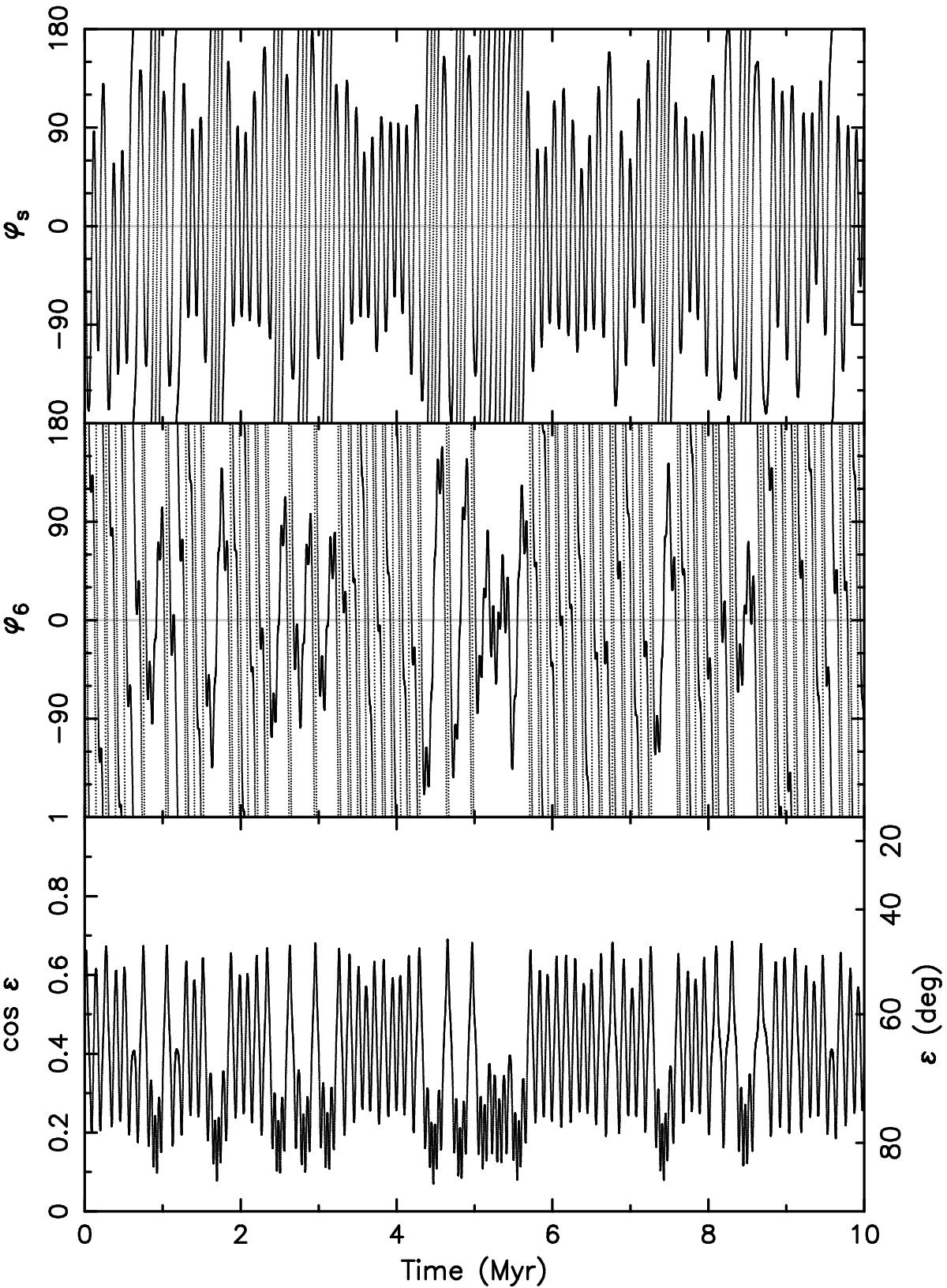Fig. 6

Example of a long-term evolution of Eulalia’s obliquity ε. Here we assumed pole P1 orientation for the initial data and numerically integrated orbit and spin evolution for the next 10 Myr interval of time. The rotation period was assumed constant, and equal to its current value of ≃29 h, and the dynamical flattening set to Δ = 0.25. Bottom panel: obliquity ε (right ordinate) and/or cosε (left ordinate) vs time in the simulation. The obliquity exhibits large oscillations between ~45° and ~85° in two distinct regimes due to overlap of Cassini resonances related to the s and s6 orbital frequencies. Middle and top panels: Phase angle of the Cassini resonance of the s6 frequency (middle) and the s frequency (top). Intermittent periods of libration correlate with the range of the obliquity oscillations at the bottom panel.
Current usage metrics show cumulative count of Article Views (full-text article views including HTML views, PDF and ePub downloads, according to the available data) and Abstracts Views on Vision4Press platform.
Data correspond to usage on the plateform after 2015. The current usage metrics is available 48-96 hours after online publication and is updated daily on week days.
Initial download of the metrics may take a while.


